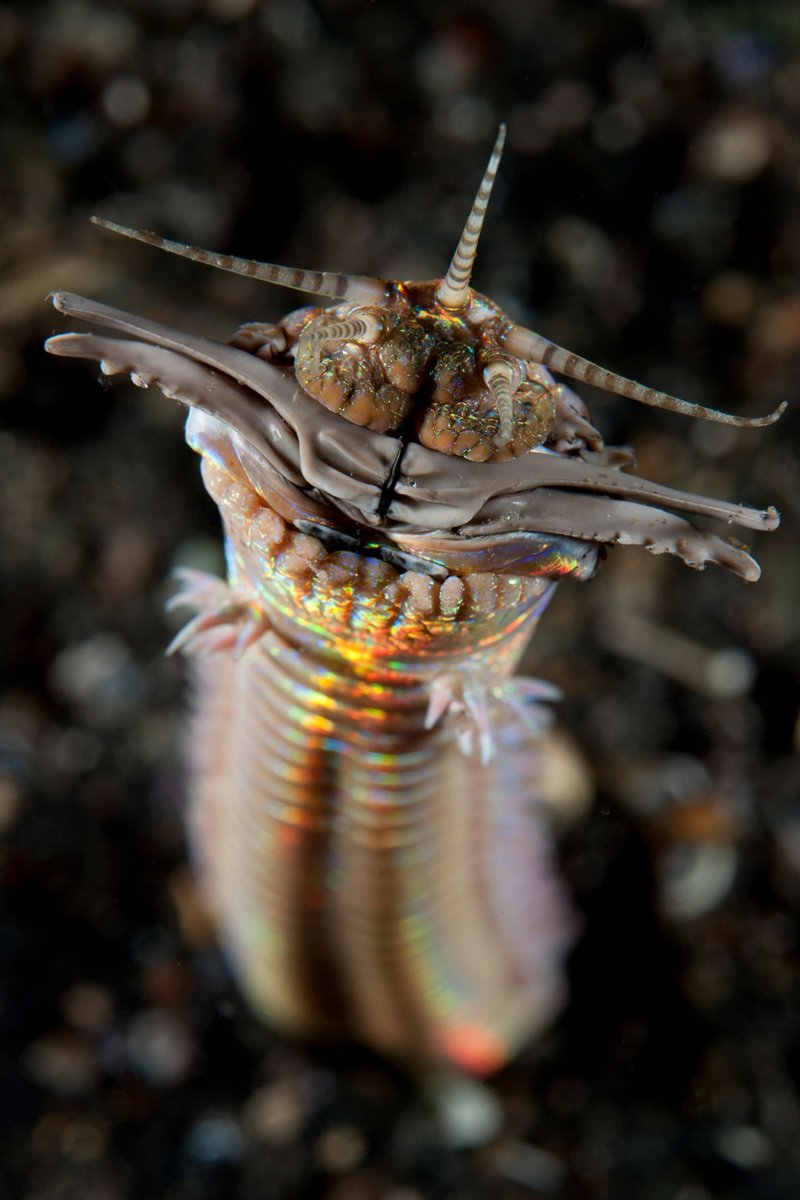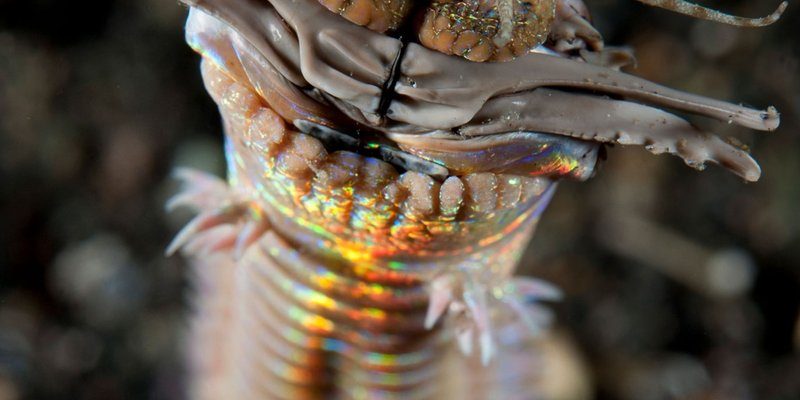
Now, if you were to envision a Bobbit worm, think of a colorful ribbon swaying in the water. These creatures can reach impressive lengths of up to ten feet! They hide in burrows, patiently waiting for unsuspecting fish to swim by, much like waiting for the right moment in a game of hide and seek. Fossils of these remarkable worms can help scientists understand what the oceans were like millions of years ago. Let’s dive deep into the world of Bobbit worm fossils and understand their significance in the fossil record.
What Are Bobbit Worms?
Bobbit worms are fascinating marine creatures that belong to the annelid family. They’re known for their long, segmented bodies and impressive hunting skills. These worms can be colorful, often displaying shades of green, red, and blue, which can make them quite striking against the ocean floor.
Bobbit worms are primarily found in tropical and subtropical waters. They create intricate burrows in the sand, where they spend most of their time. When prey, such as fish or crustaceans, comes too close, the Bobbit worm strikes with astonishing speed using its sharp jaws. Imagine this: a worm that can grab its lunch before it even knows what hit it!
The name “Bobbit worm” comes from a rather infamous event involving a man named John Wayne Bobbitt, which is a story for another day. However, the name stuck because of their impressive and often surprising hunting abilities.
The Fossil Record of Bobbit Worms
Now, let’s talk about the fascinating fossil record of Bobbit worms. Fossils are like time capsules, preserving moments from millions of years ago. The Bobbit worm’s existence is traced back to the Mesozoic era, roughly 200 million years ago. These ancient fossils show that Bobbit worms have been adapting and thriving in various environments for a long time.
Most Bobbit worm fossils are found in sedimentary rocks, which form in layers over time. These layers can tell us about the conditions of the ocean during the time the worms were alive. You might be wondering how paleontologists identify these fossils. Well, they look for distinctive features, like the segmented body structure and jaw design, which are telltale signs of Bobbit worms.
Interestingly, these fossils aren’t just old remnants; they provide valuable insights into the ocean’s ecosystem. By studying their distribution and growth patterns, scientists can infer how ancient marine environments functioned.
How Bobbit Worm Fossils Help Us Understand Ancient Oceans
Bobbit worm fossils serve as a window into ancient marine life and the ecosystems in which they lived. By examining these fossils, researchers can learn about the types of organisms that coexisted with Bobbit worms. For instance, they can determine whether the ocean was rich in life or if it was struggling to support various species.
Also, studying the size and distribution of these fossils helps scientists understand changes in sea levels and ocean temperatures over time. Picture the oceans millions of years ago: warmer, teeming with life, and home to many creatures we may not have seen today. Bobbit worm fossils can give us clues about what those environments were like.
The relationship between different marine species, including Bobbit worms, can also be analyzed through these fossils. Scientists can explore how predators and prey co-existed and evolved. This knowledge can help us understand the evolutionary processes that shaped modern marine ecosystems.
Comparing Bobbit Worms to Other Annelids
When you think of annelids, you might picture earthworms or leeches. Though they share some characteristics with Bobbit worms, these creatures have adapted to very different environments. Earthworms, for instance, play a crucial role in soil health, while Bobbit worms are expert hunters in the ocean.
Let’s break down a few differences:
- Habitat: Bobbit worms thrive in marine environments, while earthworms are found in soil.
- Feeding Methods: Bobbit worms are active predators, using their sharp jaws to catch fish. Earthworms, on the other hand, are detritivores, feeding on organic matter in the soil.
- Size: Bobbit worms can grow up to ten feet, while earthworms are generally much smaller, often just a few inches long.
By comparing these creatures, we can appreciate the diversity within annelids and understand how different species have adapted to their specific environments. It’s like comparing apples to oranges; both are valuable but serve different purposes!
Modern Discoveries and Research
Research into Bobbit worms and their fossils is ongoing, and new discoveries are regularly made. Scientists use advanced imaging techniques to study fossils in detail, helping them understand the anatomy and biology of these ancient creatures without damaging the fossils themselves.
Modern paleontology combines traditional methods with technology, making it easier to extract valuable information from fossils. For example, computer modeling and simulations can help scientists visualize what these ancient seas were like, based on the fossil evidence gathered.
Additionally, researchers are discovering more about the environmental changes that have impacted Bobbit worms over time. Climate change, for instance, can affect their habitats and food supply, prompting scientists to consider how these ancient species may have responded to similar changes in the past.
The Importance of Bobbit Worm Research
Studying Bobbit worm fossils is about understanding the past but also about looking ahead. The insights we gain can inform us about current ocean conditions and the potential impacts of environmental changes. Marine ecosystems are delicate, and understanding how species like Bobbit worms adapted—or didn’t—can guide conservation efforts today.
Imagine if we could learn from the mistakes of the past. The study of ancient annelids can help us protect modern marine life and ecosystems. Understanding how different species interact can aid efforts to maintain biodiversity in our oceans.
Furthermore, these ancient creatures remind us of the fascinating history of life on Earth. They illustrate the resilience and adaptability of life, no matter how small or seemingly insignificant.
Bobbit worm fossils are more than just remnants of ancient creatures; they are keys to understanding the mysteries of our planet’s past. By studying these ancient annelids, we gain valuable insights into the ecosystems of yesteryear and how they compare to modern marine life. The story of Bobbit worms, from their remarkable predatory skills to their role in the fossil record, is a testament to the ever-evolving tapestry of life on Earth.
So, the next time you think about worms, remember the Bobbit worm—an ancient survivor with a fascinating history that teaches us about resilience, adaptation, and the interconnectedness of all life forms. The oceans still hold many secrets, and the Bobbit worm is just one chapter in the ever-expanding story of life on our planet.

